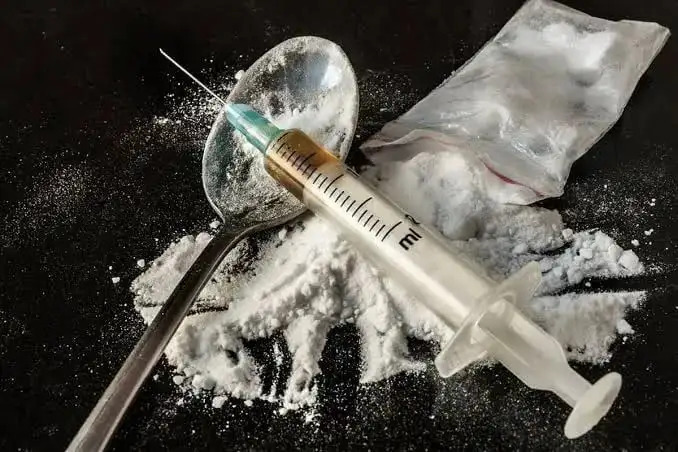Some of these illegal activities offer easy money in the form of syndicates, access to underworld activities as drug paddlers and users that ultimately drags them away from the main stream of the society
 KRC TIMES Desk
KRC TIMES Desk

We, the people of JKUT, have recently noticed sudden rise of security issues of serious nature involving young people especially between the age bracket of 15-30 years and some of these cases have distinctly been carried out in a patronized design to extract money, create fear and impose don culture in an otherwise peaceful society of Jammu Province.
It is observed from the recent incidents that the crime culture is slowly shifting its base from Urban to Rural areas targeting business establishments, influential residents by exploiting weak coverage of law and order as compared to Urbans areas.
These budding gangsters especially juveniles and unemployed youths are being indoctrinated towards crime easily by their masterminds for multipurpose use like extraction of money, drug paddling, smuggling, human trafficking and in other serious criminal activities.
Some of these illegal activities offer easy money in the form of syndicates, access to underworld activities as drug paddlers and users that ultimately drags them away from the main stream of the society. Drug menace has badly affected people of all ages across the world and it has become a big challenge for the government machinery to control its supply chain, addiction and to rehabilitate addicts in the society.
The issue of drug trafficking is not limited to one town, city, country or a continent but it has become a critical challenge for the entire mankind across the globe. It has almost entered every household in one way or the other. It is an illicit, non-medical use of limited substances that have the properties to alter mental state of a person.
Generally, the youth becomes the target of this drug menace and its abuse as they are very inquisitive and curious. The magnitude of billion dollars business of drug trading has created its own network across the globe and gradually involved youths in drug trafficking, abuse and paddling in the name of employment.

A close analysis of the impending challenge indicates that the issue raises multiple concerns of the society and demands more dedicated cohesive, collaborative and concerted approach towards deaddiction, rehabilitation and normalization of the affected addicts.
The process therefore dictates for a well laid out legal framework, strict implementation of rules and regulations, adequate administrative structure for carrying out seamless vigilance of fallible juveniles and healthy rehabilitation of the affected persons in a regulated manner.
It is a challenging task both for the state and the society. It requires a practical approach in strengthening the available legal framework that provides for more stringent penalties and punishments for drug traffickers, syndicates and other agencies involved in this dangerous act.
Though, the state machinery is primary responsible for arresting this menace from society, yet the role of each member of the society cannot be overlooked. As it involves members of the society both as users and paddlers, it becomes more pertinent to own the responsibility of uprooting this menace from its existence only, not to allow it to get into the fabric of society, spread its tentacles and shake the foundation of the society with mushrooming speed.
It demands cohesive participation of law makers, law enforcing agencies and above all responsible citizens must guard against it. As regards legal frame work, The Narcotic Drugs and Psychotropic Substance Act 1985 was passed and sanctioned by the President of India on 16 Sep 1985.
The Act came into force on 14 Nov 1985. The Narcotics Control Board was set up under the Act with effect from March 1986. The Act is also designed to fulfill India’s treaty obligations under the Single Convention on Narcotic Drugs, Convention on psychotropic substances and United Nations Convention against Illicit traffic in Narcotic drugs and Psychotropic Substances.

The act also requires the government of India to set up a National Fund for control of Drug Abuse and for meeting expenditure to combat illicit trafficking, Controlling Abuse of drugs, identifying, treating and rehabilitating addicts.
The Ministry of Social Justice and Empowerment has been centrally tasked to implement Central Sector Scheme of Assistance for Prevention of Alcoholism and substance Abuse through identification, counseling, treatment and rehabilitation of addicts.
To strengthen the anti-addiction front, the government of India started Nasha Mukt Bharat Abhiyan on 15 Aug 2020 especially for 272 most vulnerable districts based the drugs usage in the country.
Another effort in this direction was made through National Action plan to curtail the demand through preventive education, Awareness generation, capacity building, skill development, vocational training and livelihood support for ex-drug addicts.
To ensure community involvement, a community based peer led intervention for early drug use prevention amongst most vulnerable adolescents, district deaddiction centers besides addiction treatment facilities in government hospitals was also simultaneously introduced to ensure multipronged approach.
A large number of people have been sensitized, equally education institutions were involved, Master Volunteers Force identified, use of social media and other effective software applications were brought on board to contain the issue both in physical and psychological terms but the reality on ground still demands a cohesive and comprehensive action plan.
The role of society at large would undoubtedly help state agencies to break the chain of supply and demand. A sincere and sensitive approach of the society towards the core of the issue could discourage both users and the paddlers as both of them belong to the society at large.
It is also important to understand the ill effect of the use of drugs for all of us especially the juveniles who are yet to learn qualities of a good citizen, empower themselves both educationally and professionally.
It clearly emerges that the society and the state mechanism are to jointly share the responsibility of uprooting this malaise from the society, provide help to rehabilitate ex-addicts, encourage minors and adults for education, skill them adequately to shoulder the responsibility and above all create corresponding employment opportunities not only in government sector but also in private sector, let them not be job seekers but job creators and for that our education system needs to move from Academic to Vocational education.
The drug addiction in the present scenario despite all above discussed schemes run by the state is a serious challenge for the nation and is on the rise day by day.


